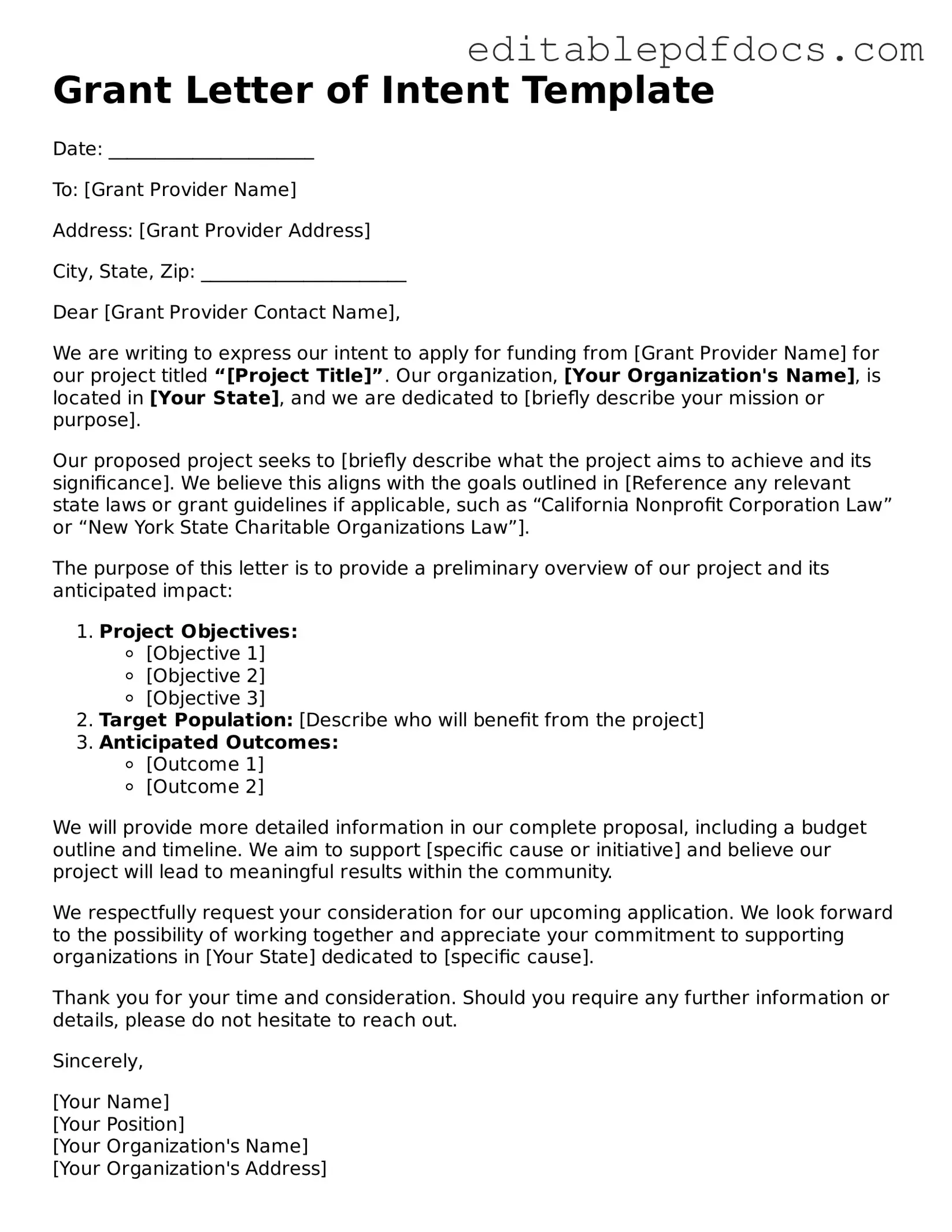Filling out a Grant Letter of Intent (LOI) can be a critical step in securing funding for a project or organization. However, many individuals make common mistakes that can jeopardize their chances of success. One frequent error is providing insufficient detail about the proposed project. Funders often look for a clear understanding of the project’s goals, target audience, and intended outcomes. A vague description can lead to confusion and may result in the LOI being dismissed.
Another common mistake is failing to adhere to the specified guidelines set forth by the funding organization. Each grantor may have unique requirements regarding formatting, length, and content. Ignoring these guidelines can reflect poorly on the applicant and may lead to automatic disqualification. It is crucial to carefully read and follow all instructions provided in the grant application materials.
Some applicants neglect to demonstrate the project’s alignment with the funder’s mission or priorities. Funders often seek projects that resonate with their goals. If the LOI does not clearly articulate how the proposed project aligns with the funder’s objectives, it may be viewed as a poor fit, reducing the likelihood of approval.
Additionally, many individuals overlook the importance of proofreading their LOIs. Spelling and grammatical errors can create an impression of carelessness and lack of professionalism. A well-written LOI, free from errors, conveys attention to detail and respect for the funder’s time.
Another mistake involves failing to include relevant data or evidence to support the proposal. Funders appreciate data that illustrates the need for the project or demonstrates its potential impact. Without this supporting information, the LOI may lack credibility and fail to persuade the funder of its importance.
Finally, some applicants do not adequately address the budgetary aspects of the project. While the LOI may not require a detailed budget, providing a general overview of funding needs and how the grant will be utilized can strengthen the application. This transparency shows the funder that the applicant has thoughtfully considered the financial aspects of the project.
